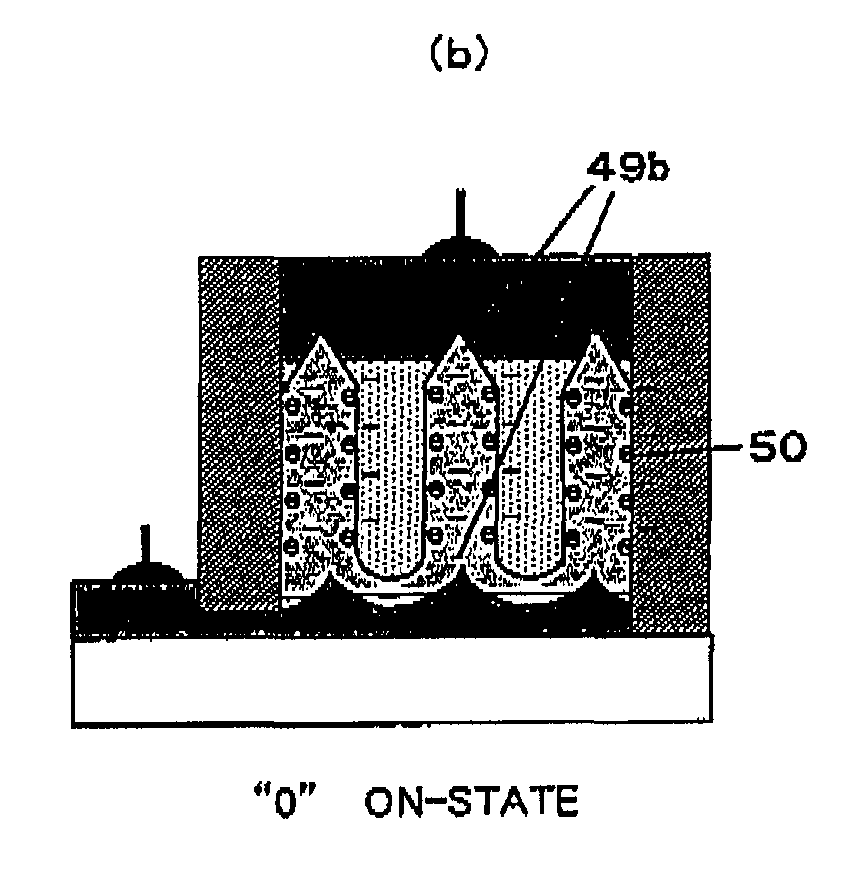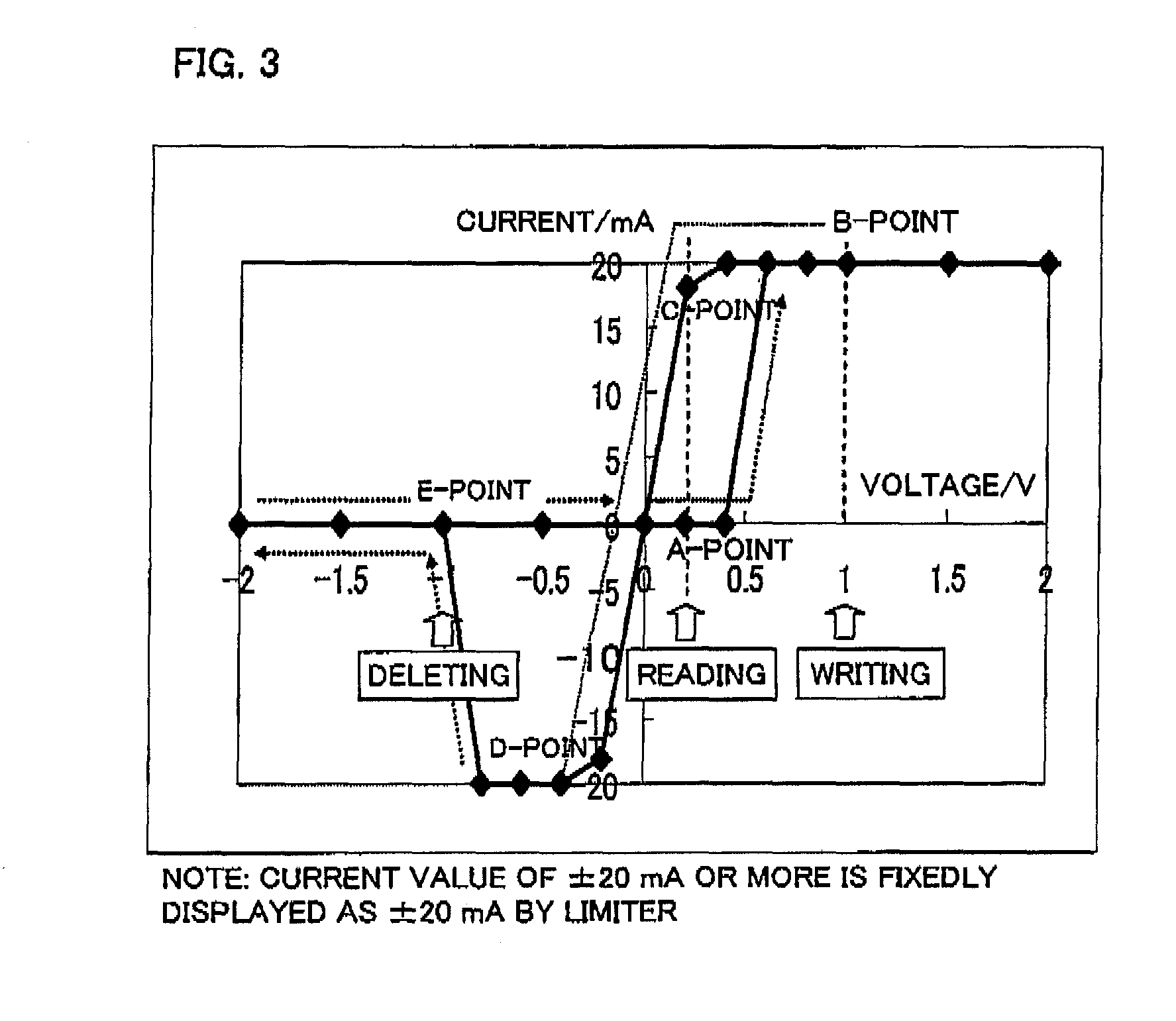Nonvolatile Memory
a non-volatile memory, non-volatile technology, applied in the direction of digital storage, diodes, instruments, etc., can solve the problems of conventional memory unsatisfactory, dram requires refresh operation, and the capacity cannot be increased, so as to achieve the effect of small memory consumption power, high write speed, and small battery siz
- Summary
- Abstract
- Description
- Claims
- Application Information
AI Technical Summary
Benefits of technology
Problems solved by technology
Method used
Image
Examples
example 1
[0097]A surface of an aluminum whose purity was 99.99%, diameter was 2 inφ, and thickness was 0.5 mm was polished for approximately four minutes by chemical mechanical polishing (CMP) or electrolytically polished in a mixture bath in which a ratio of perchloric acid and ethanol was 1:4. After that, a cathode was located on a surface of the sample in a 3%-oxalic-acid bath and constant voltage anodic oxidation was performed for several hours at a bath temperature of 20° C. and 40 V while a bath solution was stirred. Then, an oxide film was dissolved in a mixture bath containing deionized water, chronic acid, and phosphoric acid at a bath temperature of 60° C. Then, the anodic oxidation was performed again in the above-mentioned condition for several minutes to form a nano-hole-containing aluminum oxide film having a thickness of approximately 0.3 μm in which thin holes each having a diameter of approximately 35 nm were arranged at a regular interval of 100 nm.
[0098]A surface of the sa...
example 2
[0103]Instead of the aluminum substrate in Example 1, a substrate (2 inφ and 0.5 mm in thickness) was used in which an aluminum sputtering film whose thickness was 20 μm was formed on an SiO2 film produced by thermal oxidation of a silicon substrate and the same processes as those in Example 1 were performed.
[0104]A resistance value measuring circuit shown in FIG. 6 was used. A change in resistance value of the memory element obtained in Example 1 was measured using a high-speed oscilloscope. FIG. 7 shows data indicating the change in resistance value. As is apparent from FIG. 7, a time for shift from a high resistance (22 MΩ) to a low resistance (2Ω) when a voltage of 1 V was applied between electrodes was 0.02 μs (20 ns). Thus, it is apparent that a write time is equal to or smaller than 50 ns even when a time lag is taken into account.
[0105]FIG. 8 shows an example of a 4×4-memory fundamental circuit using the nonvolatile memory according to the present invention.
[0106]Each memory...
PUM
 Login to View More
Login to View More Abstract
Description
Claims
Application Information
 Login to View More
Login to View More - R&D
- Intellectual Property
- Life Sciences
- Materials
- Tech Scout
- Unparalleled Data Quality
- Higher Quality Content
- 60% Fewer Hallucinations
Browse by: Latest US Patents, China's latest patents, Technical Efficacy Thesaurus, Application Domain, Technology Topic, Popular Technical Reports.
© 2025 PatSnap. All rights reserved.Legal|Privacy policy|Modern Slavery Act Transparency Statement|Sitemap|About US| Contact US: help@patsnap.com



